A crime bill survived Lombardo’s repeal effort. Has it cut the prison population as promised?
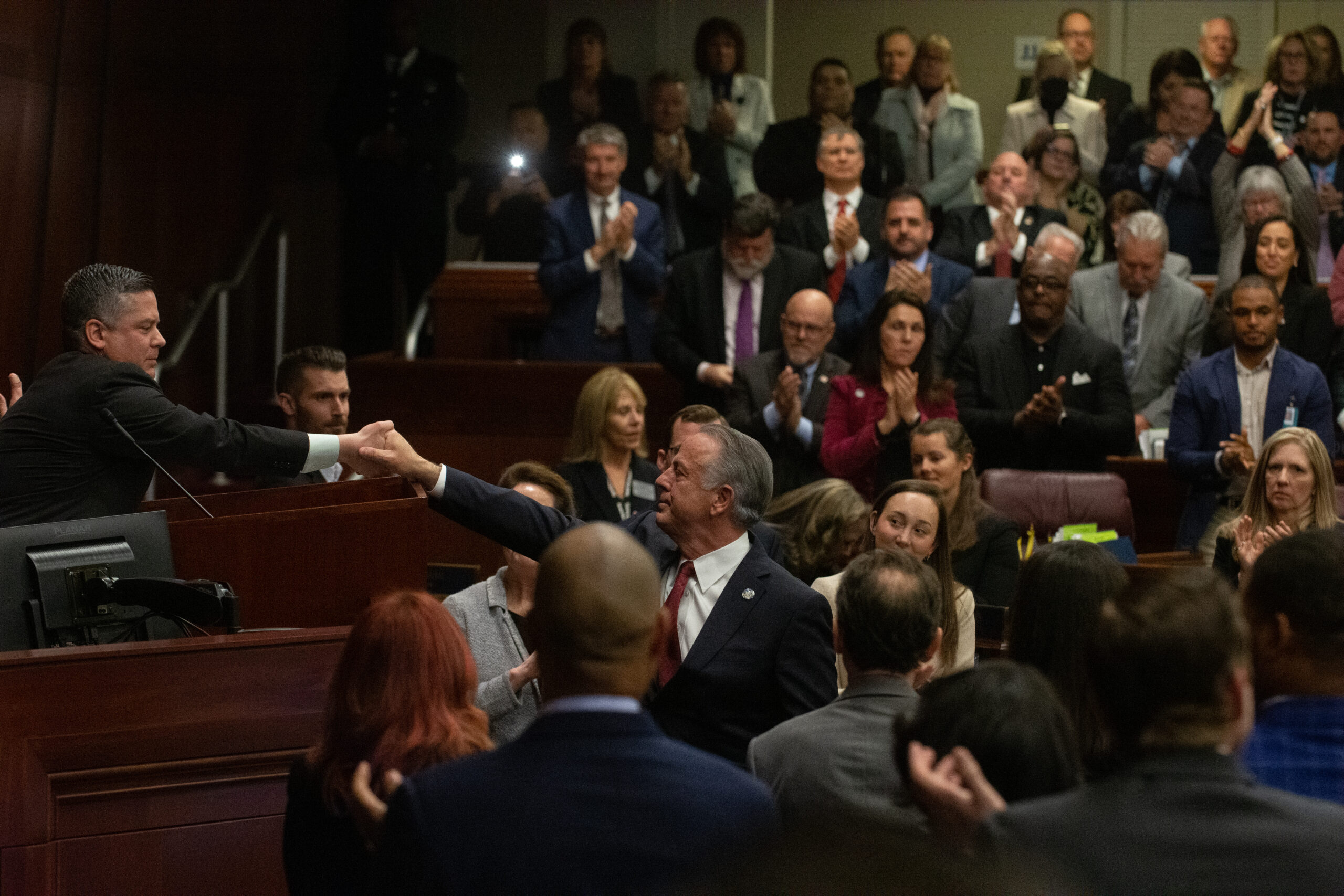
In 2019, Democratic lawmakers pushed forward a wide-ranging package of criminal justice reforms aimed at curbing a ballooning prison population that threatened to bust the state’s budget for the carceral system.
Despite AB236 garnering bipartisan support, the sweeping changes made to the penalty structure drew the ire of prosecutors and police — later scapegoated for rising property crimes and used by Clark County Sheriff Joe Lombardo to hammer Democrats as “soft on crime” in his successful run for governor last year.
But when the dust settled at the end of Lombardo’s first legislative session in June, Democratic lawmakers had significantly whittled the Republican governor’s ambitious public safety policy package that sought to undo many key changes to criminal sentencing from AB236. They effectively blocked him from any significant reversal of the 2019 reforms.
What has happened since the major 2019 overhaul of the state criminal code? Why did Lombardo's proposed changes fall flat? What's next for the state's criminal justice system?
Understanding the effects of AB236 has been complicated by a range of intervening factors — most prominently the COVID-19 pandemic, which upended crime and public safety just months before the implementation of the bill by scaling back policing and freezing progress of cases through the courts. Still, statewide crime statistics show a varied picture of public safety, including an increase in property crime and decrease in violent crime from 2019 to 2022.
But state officials have estimated that AB236 has already helped avert millions of dollars in costs for incarceration.
Along with a partisan divide in state government that has brewed conflict over criminal justice policy, the state’s three top policy making chieftains come from different criminal justice backgrounds — the governor was a sheriff, the Senate majority leader a prosecutor and the Assembly speaker a public defender.
As the 2023 legislative session focused on other high-profile issues, Lombardo’s bill to stiffen criminal penalties (SB412) fell to the wayside. On the final day of the session, Democratic lawmakers held the first and only hearing of the bill — and had reduced it from 68 pages to nine — before a sprawling huddle of legislators, lobbyists and reporters on the side of the Senate chamber.
With the 2019 changes left largely intact, AB236 remains situated in a politically fraught space — caught between Democrats who want lighter penalties for nonviolent offenses and Republicans seeking a “tough-on-crime” approach.
How did we get here?
Heading into the 2019 legislative session, state officials were faced with a looming crisis. The state’s prison population was projected to soon grow beyond capacity, potentially requiring the construction of a new prison and up to $770 million in new costs over the next decade.
In the leadup to the session, state leaders including Republican Gov. Brian Sandoval charged the Advisory Commission on the Administration of Justice (ACAJ) to review the state’s criminal justice system as part of a federal process that aims to save states money on correctional costs and reinvest savings to help reduce crime.
During that time, staff at the Crime and Justice Institute (CJI) — an organization providing technical assistance to support the initiative — compiled data showing that Nevada was much more likely than other states to use imprisonment rather than parole or probation. They also found that a large majority of Nevadans in prison were sentenced for a nonviolent crime, and that the number of incarcerated individuals was increasing even as prison populations in other growing states declined.
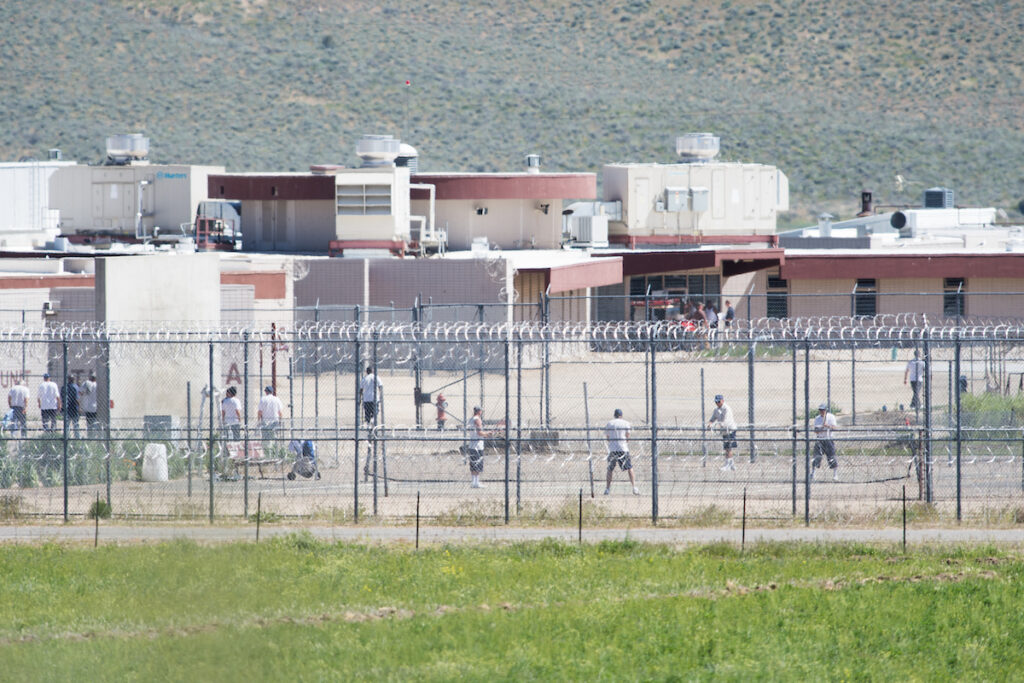
Their research showed Nevada’s imprisonment rate was 15 percent higher than the national average, recidivism rates were rising, more women were entering prison and that the number of people admitted to prison with mental health needs rose 35 percent over the last decade.
“The biggest finding was the number of people that were being admitted to prison who had fairly significant behavioral health challenges,” said Len Engel, director of policy and campaigns at CJI, who added that many defendants had difficulty accessing diversion programs, which can spare people jail time if they successfully complete rehabilitation and counseling.
“We want to do things that we aren't able to do now because we don't have the funding, and if we're going to continue to grow, that money is going to be directed toward the prison system rather than toward public safety,” Engel added
The ACAJ, a group that included judges, lawmakers and others across the criminal justice spectrum, incorporated that data into a report of 25 recommendations meant to save the state hundreds of millions of dollars in prison costs. However, not all commission members were on board — four of the 15 voted against the recommendations, including a justice court judge, a Republican lawmaker, a district attorney and a police lobbyist, who argued the changes reducing felonies to misdemeanors would result in a “negative impact on public safety.”
Those recommendations later became AB236. After months of negotiations and four amendments, AB236 passed on the final day of the session — drawing a 19-2 vote in the Senate with just two Republicans opposed. That included a vote in support from former Sen. Ben Kieckhefer (R-Reno), who later became Lombardo’s chief of staff.
The bill had garnered a broad range of support, not only from the original key backers — including Democratic lawmakers, Nevada Supreme Court Justice James Hardesty, public defenders and the director of state prisons — but also from outside business and political groups, ranging from the Reno Sparks Chamber of Commerce to the libertarian conservative advocacy group Americans for Prosperity.
But top law enforcement groups opposed the changes.
In a final hearing on the bill, they panned language significantly raising the threshold at which drug trafficking charges are imposed, arguing that raising the limit from 14 grams to 100 grams would be too high in the midst of an opioid epidemic.
“This bill as drafted is not the solution,” Jennifer Noble, chief appellate deputy district attorney in Washoe County and a lobbyist for the Nevada District Attorneys Association, said in May 2019.
A lobbyist for the Las Vegas Metropolitan Police Department, which Lombardo led at the time, testified in neutral on the bill during its final hearing, saying he was doing so “in the spirit of compromise and negotiation.”
Despite some differences between the ACAJ recommendations and AB236 — the bill raised the threshold at which the value of stolen goods is considered felony theft from $650 to $1,200, rather than the recommended $2,000 — the bill marked a sweeping set of changes to the state’s legal system.
Pandemic interrupts justice overhaul
Evaluating the effects of AB236 — the vast majority of which took effect in July 2020 — has been complicated by the COVID-19 pandemic, an economic downturn, police protests and other factors that have wrought major changes in crime, court administration and the incarcerated population.
The Nevada Independent’s analyses of 2021 and 2022 state crime data found that violent crime rates declined across the state, though murders rose, coinciding with nationwide increases in homicides.
A state-managed dashboard shows that crime trends have remained mixed, but there has been no massive spike in crime that 2022 campaign ads tried to portray.
Noble said in an interview last month that the Washoe County District Attorney’s Office has seen an increase in certain property crimes since the bill’s implementation.
“From our perspective, there's also been at least a correlation with an increase in incidents of certain types of crimes,” Noble said about AB236.
Noble highlighted the higher bar for charging a theft case as a felony and lightened penalties for non-residential burglary, attributing them to recent increases in property crimes.
Despite those increases, Engel said CJI’s research found that the “narrative that crime was out of control in Nevada was not the case.”
“It's clear that violent crime actually had declined. Very few states saw a decline, but Nevada was one of them,” he said.
The pandemic made it difficult to tell whether AB236 reduced prison costs. By the end of 2021, Nevada’s incarcerated population reached its lowest level in two decades at less than 10,400 people, down from a recent peak of more than 14,000 in 2016, according to data published by the Nevada Department of Sentencing Policy.
While Nevada did not grant early releases to reduce the prison population during the pandemic, other factors — Nevada’s high rate of COVID-19 deaths in its state prisons plus changes to policing that reduced admissions and delays in the courts — helped drive the prison population down further.
Another key goal of the bill — reducing the number of people imprisoned for nonviolent offenses — appears on track. Data from the Nevada Sentencing Commission shows that as of July 2022, a higher share of the prison population was convicted of a Category A or Category B felony (a higher-level offense, typically associated with violent or sex crimes) than in July 2017, with the number rising from roughly 80 percent to 86 percent.
“This means the resources being spent on state corrections are focused on the most serious and violent offenders,” the Nevada Sentencing Commission wrote in its most recent annual report.
Changes to the local jail populations from AB236 have also been complicated by the pandemic. In 2022, the Clark County Detention Center — a large jail where people who are convicted of misdemeanors or are awaiting trial or sentencing are held — had an average daily population of less than 3,000, about the same level as in 2020 and 2021 but significantly below the 2019 daily average of more than 3,700 people.
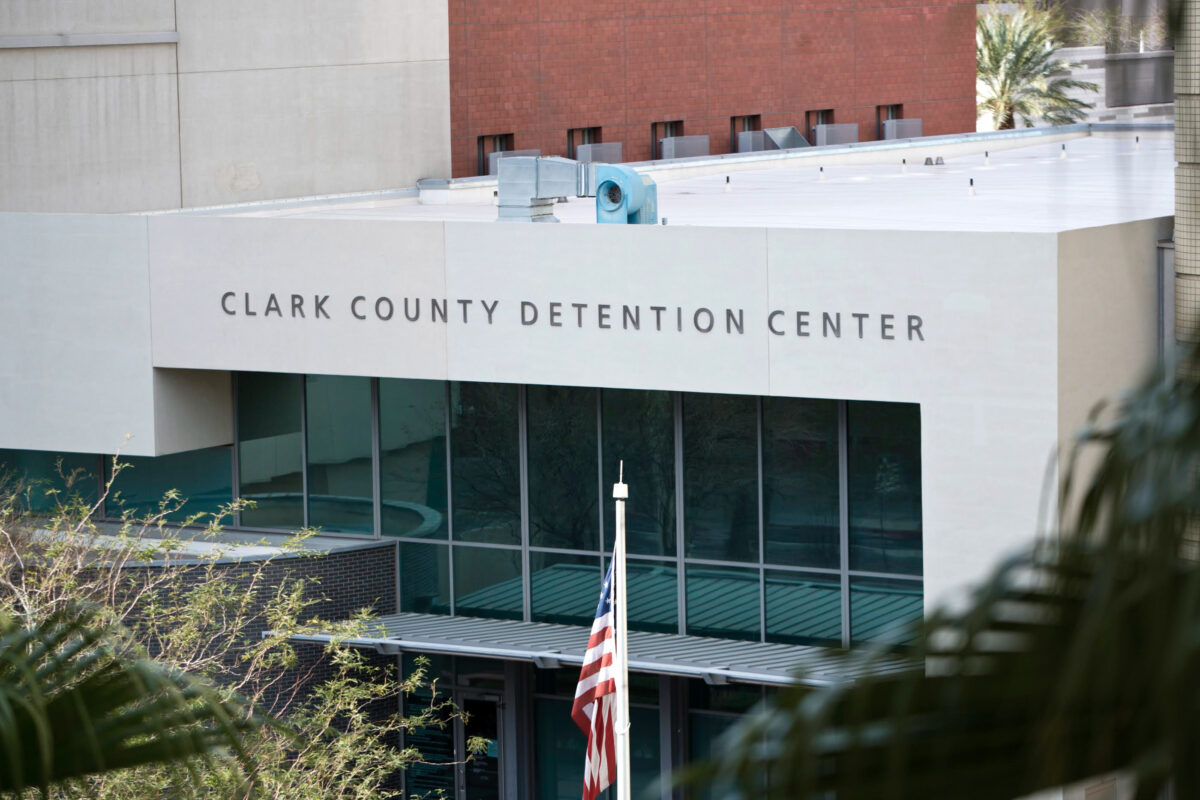
Fully evaluating the effects of AB236 will be a yearslong process. Researchers originally projected that the bill would prevent 63 percent of anticipated prison population growth over a ten-year period, saving the state $540 million. But because of the intertwined effects of policy changes, the pandemic and outside societal factors, Engel said he stays away “from a cause and effect relationship” when evaluating the impact of the bill.
“Understanding the impacts of [AB236] over the next few years is going to be very difficult because things were not happening as expected — decisions at the courts, pretrial sentencing decisions, release decisions,” Engel said.
AB236 was also intended to reduce rates of recidivism — referring to rearrest, reconviction or return to prison within three years of release — through increased access to specialty court programs and improved systems for allowing those released from prison to reenter society.
The state’s latest recidivism report released last month found the group of people released from prison in 2019 had a recidivism rate of 24.4 percent — the lowest rate in more than a decade and just below the rates for the 2016 and 2017 release cohorts.
Between lower recidivism rates and a smaller prison population, the Nevada Sentencing Commission calculated last November that AB236 has helped the state avoid $42 million in costs.
How did a bipartisan criminal justice reform bill become a political firestarter?
It was not until the 2022 campaign season that attacks against AB236 truly ramped up.
Lombardo railed often against “soft-on-crime” policies supported by Democratic lawmakers and former Gov. Steve Sisolak, emphasizing his law enforcement bonafides on the campaign trail and touting in his first ad having locked up violent criminals.
Although the economy and abortion overshadowed crime as top voter priorities during the election, it proved to be a winning issue for Lombardo, who became just the second Nevada governor to assume office after serving as a county sheriff. A CNN exit poll of nearly 3,000 Nevada voters found that 11 percent identified crime as a top issue, tied for the third highest, and among those voters, Lombardo led Sisolak by 9 percentage points.
Lombardo’s most forceful attacks targeted AB236, as he tied the bill directly to increases in crime rates. Democrats blamed Lombardo for any increases in crime because of his role as sheriff.
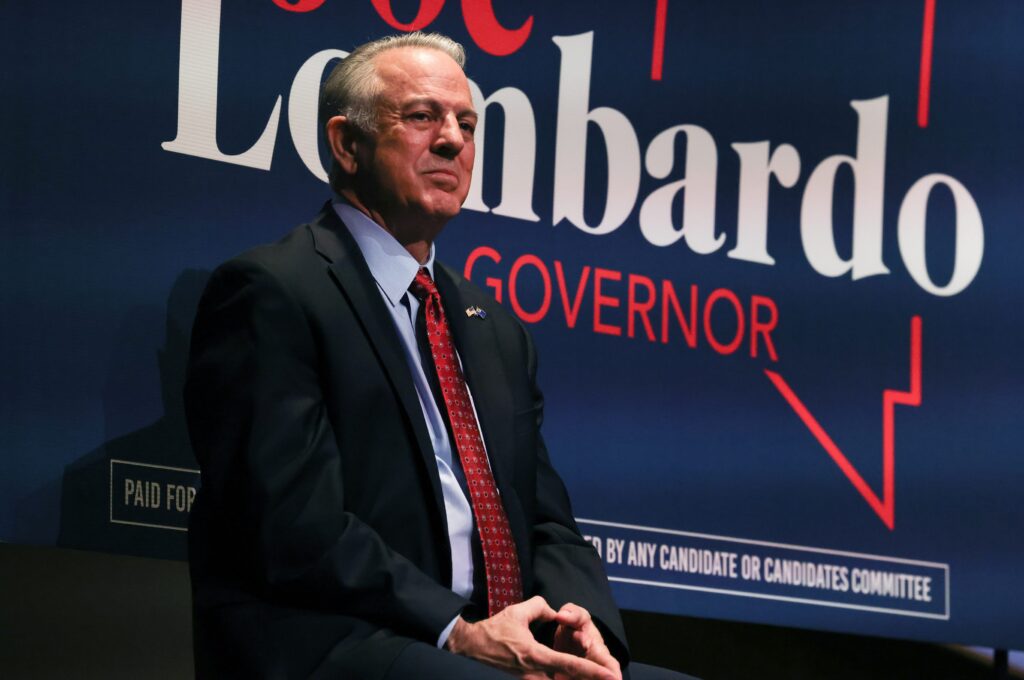
“I think there's a politicizing of all of the elements that are happening across the country to try to detract away from what was a bipartisan bill,” said Athar Haseebullah, executive director of the American Civil Liberties Union of Nevada and member of the Nevada Sentencing Commission.
Though the political attacks have failed to paint an accurate picture of public safety, Engel said the data may not matter to people who feel unsafe.
“If you're watching Fox News, and they're showing the same jewelry store theft, or shoplifting when those 50 people broke the windows and went crazy, you're feeling unsafe even if it is happening in another state in another city,” Engel said.
A 2021 poll found that fewer than half of Nevada registered voters believed the crime rate was increasing and that 56 percent of respondents felt safe in their community — slightly improved marks compared with the few years prior to the pandemic, according to data from UNLV’s State of the State Survey.
But while the political attacks — including former President Donald Trump’s false description of Nevada as a “cesspool of crime” while standing alongside Lombardo in Las Vegas — have obscured the reality of crime rates, law enforcement officials have maintained their opposition to parts of AB236.
Democrats shut down Lombardo’s proposed AB236 rollback, what was left?
During his State of the State address in January, Lombardo focused part of the speech directly on opposition AB236, describing legislation that he would bring forward as intended to make “it harder, not easier, to commit a crime in the state,” including increasing penalties for fentanyl possession, lowering the felony theft threshold and allowing tougher sanctions for parole violations.
Engel said Lombardo’s comments prompted a conversation between him and Assembly Speaker Steve Yeager (D-Las Vegas), a key architect behind AB236, eventually leading CJI to meet individually with state lawmakers to educate them about violent crime rates in Nevada since the passage of AB236.
Lombardo’s SB412 was introduced in late March, a wide-ranging measure dubbed the “Crime Reduction Act” that proposed a rollback of certain alternatives to prison time as well as increased penalties for certain crimes.
Engel panned Lombardo’s proposal, saying it would ultimately lead to a ballooning inmate population that would drive up costs for a beleaguered prison system already struggling with high vacancy rates.
Earlier this year, the state’s prisons director told lawmakers that the agency faced critically low staffing levels, and August data on state agency vacancies shows 33 percent of full-time positions at the Department of Corrections were vacant — one of the highest rates in the state.
“We basically said, ‘If [SB412] passes, it's going to increase the prison population at a time where their staffing is at crisis levels,’” Engel said.
Haseebullah also described the bill as “short sighted,” saying it would have been jarring to see the return of policies that “led to an overpopulation of people of color within our criminal legal system.”
But Noble said Lombardo’s original bill aligned with prosecutors’ goals.
She wanted to disallow diversion for “crimes against children or the elderly in any capacity,” prohibit early discharge from probation for residential burglary and gun crimes, impose “tougher sanctions for parole violations” and lower the felony theft threshold.
She also said problems can arise if a defendant fails to comply with the terms of their diversion, resulting in “a case that’s substantially older” and harder to prove further away from the time of the crime.
The 2019 reforms also expanded mandatory record sealing, requiring a defendant’s record to be sealed if they complete diversion. Noble said that prevents prosecutors from knowing if someone has had prior contact with the criminal justice system.
“We do have sort of ongoing concerns about the effect over time on community safety,” she said.
But Democratic legislative leaders did not signal any willingness to roll back the sweeping policy changes enacted fewer than four years prior.
Still, SB412 was not entirely dead. Democratic lawmakers brought forward a heavily revised version of the bill on the final day of the 120-day legislative session, quickly advancing the five remaining provisions despite not holding any public hearings on the bill in the preceding 119 days.
Yeager and a Lombardo spokesperson both described the outcome as a compromise, and Lombardo’s office noted that some priorities cut from his bill, such as stronger “penalties for felons with firearms violations,” ended up being passed through other legislation.
Though Noble said many of the bill’s original provisions would have been an “uphill battle” to get passed, she was heartened to see the change to the statute on strangulation — a crime she said is often a predictor of attempted murder and homicide.
“Nevada’s previous definition of strangulation was among the most scientifically burdensome and sort of practically burdensome in the country,” she said. “This change in the law allows us to more effectively prosecute strangulation.”
Divide in approach persists
While the current political divide is likely to prevent any major changes to the state’s recent landmark criminal justice reforms, those who dueled over AB236 remain split.
Noble and others in law enforcement will continue to argue for stricter penalties that they say will deter crime.
“The people in diversion have less of a motivation, if you will. A Category E offense hanging over your head versus a Category B offense … that's going to carry substantially more time, and I would anticipate would motivate somebody to get clean or to stop engaging in the behaviors that got the criminal justice system in the first place,” Noble said.
Haseebullah dismissed that argument, saying he does not think someone intending to seriously harm another person is “looking at the [Nevada Revised Statutes] before they make those decisions.”
Research from the National Institute of Justice, a federal government research agency, shows that stricter penalties do not generally deter crime because criminals may not be aware of the sanctions that exist.
“[With AB236] there's a focus on how do we treat the systems that found individuals within the system in the first place, instead of simply just throwing the book at them and thinking that crime and punishment is what deters individuals from committing every single crime that's out there,” Haseebullah said.
This past session included multiple efforts to hone and follow through on the reinvestment aspect of the AB236 initiative.
That included AB388, a bill from Yeager that provided $3 million to the Department of Sentencing Policy for providing grants related to reducing recidivism — a slimmed down amount compared with the estimated $42 million in savings realized by AB236, according to the commission.
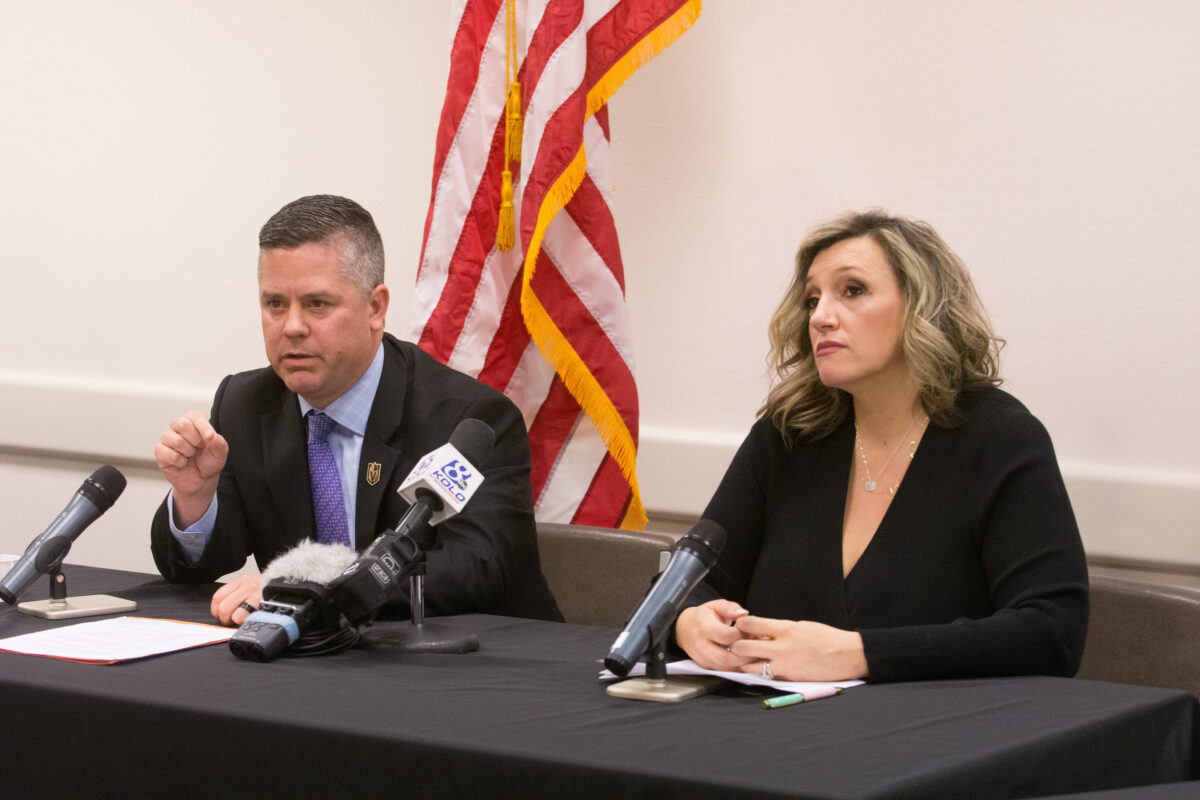
Separately, at least one issue emerged as a key bipartisan priority — combatting fentanyl overdose deaths. Lawmakers lowered the quantity of fentanyl a person must possess to trigger a trafficking charge, though the change set the amount significantly higher than Lombardo’s proposal to raise criminal penalties for possession in any amount.
In a statement, Lombardo described SB412 as “a critical first step in restoring safety to Nevada communities,” but said “significant work remains in strengthening our criminal justice legislation.”
The Nevada Sentencing Commission, meanwhile, will continue to evaluate the effects of AB236 and refine the state’s criminal justice policies. It's required to submit a report before each legislative session making recommendations for policy changes, and is focusing on recidivism and re-entry ahead of the 2025 session.
Hardesty, a retired Nevada Supreme Court justice who previously chaired the ACAJ and Nevada Sentencing Commission, heralded the work of the commission and the Department of Sentencing Policy in understanding the long-term effects of the bill.
“That structure really hasn’t been present,” Hardesty said. “Now the Legislature can have an experienced and qualified group of personnel — and commission — to conduct these policy differences and make data-driven decisions.”
